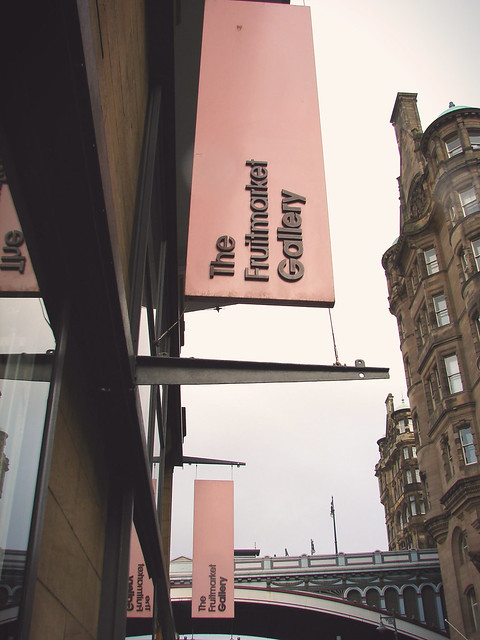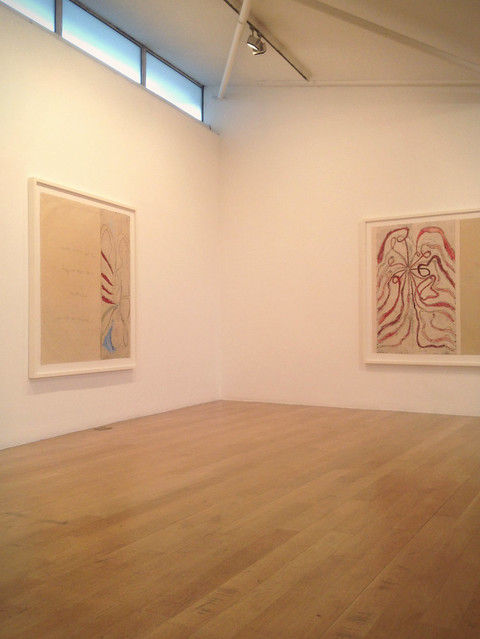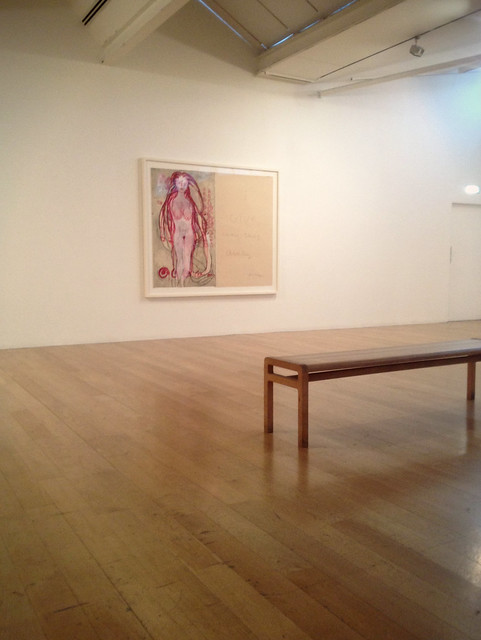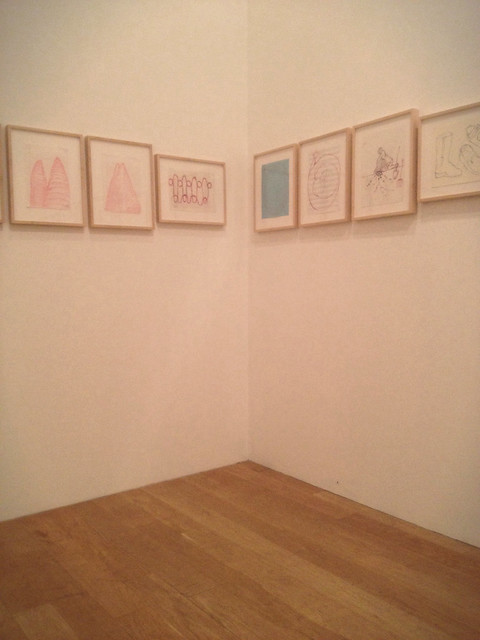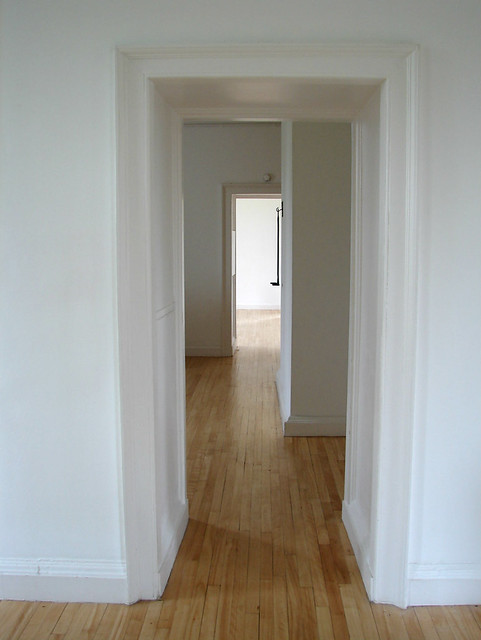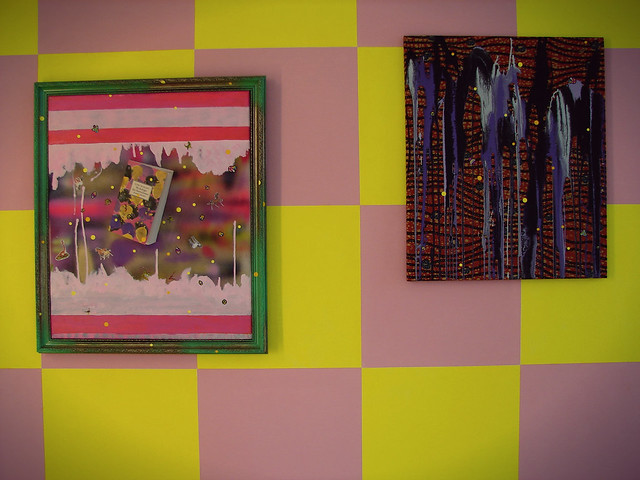On through 26, 2013 at the Centre for Contemporary Art, Glasgow
Still from Carles Congost, Paradigm, film, 2012 // via //
Clip from Carles Congost, Paradigm, 2012
One art exhibition that took me by surprise was one that I mentioned a few weeks ago when I took an afternoon gallery-hop visit to Glasgow, and one of our stops was the CCA. I mentioned then, and I'll say it again, that I've always been a little on the fence about the moving image when it comes to art exhibitions. I've been to countless museums and galleries, and almost always stop into the inevitable darkened room that sits on one end of the exhibition space. It's hard to resist seeing the source of the strange noises that echo through the galleries.
I think the moving image, film art, video art--whatever you want to call it--is an art form I've simply had a hard time wrapping my head around. I've only begun to seriously look at it. Call it personal preference, or lack of understanding. I might as well just be honest about that rather gaping void in my understanding of art and its history. But on the other hand, perhaps I just haven't seen things that 'spoke' to me. Perhaps I walked into too many gallery screening rooms at the wrong time, didn't stick around long enough, and left feeling more and more confused and disinterested. Like any other kind of art, film art can vary dramatically in style, length, presentation size, theme, etc. Sound becomes an essential element, and notable when there is none.
Anyway. I could go on forever about how art films have suddenly captivated me in a way I hardly know how to express, and strangely it is because of two films by two artists that I saw nearly two months ago at the same time. I saw both films twice, in quick succession, and perhaps, just maybe, this is why I have considered them so much since. It's unusual for me to continue coming back to artwork of any kind, trying to piece it apart and back together, to interpret it, to comprehend it in some way. (Unless I have to. I know this sounds weird, since that's what all this art history business is about, but that's that.) But, flipping over to movies, or a book, where there's a narrative and a moving image (if only in my own imagination), there are certain films and scenes from films that stick with me for some reason. I roll them over in my mind, sometimes disliking them at first and then finding that they challenge me in some unforeseen way, and after some time I come to really appreciate them. I think the same may go for film art. I need to really spend some time with it in order to learn how to appreciate it.
Above is a short clip from Paradigm. The other film in this exhibition, screened in the same room, on the same scale, and alternating back and forth with Paradigm, was Henry Coombes' Two Discs and a Zed. This is the one that initially weirded me out a little bit, with scenes of the Highlands and Coombes himself dressed as a Pictish man in a cave, chanting and then shown being wrapped in plaster and turned on a spit, interspersed with rather romantic scenes of a wolf running around the National Galleries of Scotland, picking meat off a heavily draped table. But it was also the one I wanted to see a second time in order to try to pick it apart myself. I've had a still photograph from a scene of the wolf, which was printed in the exhibition program, hanging in my room and I am still entranced by some of the imagery in this work. It doesn't seem that Two Discs and a Zed is available to view on his site as yet, but his other films and work are available there.
Paradigm has a highly produced soundtrack, and the figures in the film move in slow motion, sometimes singing along with the lyrics. At first I thought the highly-produced, strange music video-like quality of it was cheesy, but then on a second viewing it gave me pause to reconsider. One of the other students I was with referred to it seeming 'forced.' The concept of 'forced artwork' sort of jarred my brain. I started to wonder what it meant for an artist to 'force' work, or for a work to appear as such. Does the quality 'forced' even exist in art? And how? Is it a personal, subjective interpretation? I almost thought the same thing, if by 'forced' she meant 'highly produced.' Not what I think of when I think of video art -- grainy videos (think Andy Warhol or Fluxus). I wonder if the student hadn't criticized it that way, whatever her reason, I might not have thought so hard about it myself.
After a few weeks, I wish I could both again. I wanted to share these two videos again and offer some of my own thoughts on film art, using these two, or the Man of the Year exhibition, as something akin to a case study in my ever-evolving and growing understanding of art, especially of the contemporary kind.
Cheers!
Kate xx
I think the moving image, film art, video art--whatever you want to call it--is an art form I've simply had a hard time wrapping my head around. I've only begun to seriously look at it. Call it personal preference, or lack of understanding. I might as well just be honest about that rather gaping void in my understanding of art and its history. But on the other hand, perhaps I just haven't seen things that 'spoke' to me. Perhaps I walked into too many gallery screening rooms at the wrong time, didn't stick around long enough, and left feeling more and more confused and disinterested. Like any other kind of art, film art can vary dramatically in style, length, presentation size, theme, etc. Sound becomes an essential element, and notable when there is none.
Anyway. I could go on forever about how art films have suddenly captivated me in a way I hardly know how to express, and strangely it is because of two films by two artists that I saw nearly two months ago at the same time. I saw both films twice, in quick succession, and perhaps, just maybe, this is why I have considered them so much since. It's unusual for me to continue coming back to artwork of any kind, trying to piece it apart and back together, to interpret it, to comprehend it in some way. (Unless I have to. I know this sounds weird, since that's what all this art history business is about, but that's that.) But, flipping over to movies, or a book, where there's a narrative and a moving image (if only in my own imagination), there are certain films and scenes from films that stick with me for some reason. I roll them over in my mind, sometimes disliking them at first and then finding that they challenge me in some unforeseen way, and after some time I come to really appreciate them. I think the same may go for film art. I need to really spend some time with it in order to learn how to appreciate it.
Above is a short clip from Paradigm. The other film in this exhibition, screened in the same room, on the same scale, and alternating back and forth with Paradigm, was Henry Coombes' Two Discs and a Zed. This is the one that initially weirded me out a little bit, with scenes of the Highlands and Coombes himself dressed as a Pictish man in a cave, chanting and then shown being wrapped in plaster and turned on a spit, interspersed with rather romantic scenes of a wolf running around the National Galleries of Scotland, picking meat off a heavily draped table. But it was also the one I wanted to see a second time in order to try to pick it apart myself. I've had a still photograph from a scene of the wolf, which was printed in the exhibition program, hanging in my room and I am still entranced by some of the imagery in this work. It doesn't seem that Two Discs and a Zed is available to view on his site as yet, but his other films and work are available there.
Image of wolf from Henry Coombes, Two Discs and a Zed, film. // via //
Paradigm has a highly produced soundtrack, and the figures in the film move in slow motion, sometimes singing along with the lyrics. At first I thought the highly-produced, strange music video-like quality of it was cheesy, but then on a second viewing it gave me pause to reconsider. One of the other students I was with referred to it seeming 'forced.' The concept of 'forced artwork' sort of jarred my brain. I started to wonder what it meant for an artist to 'force' work, or for a work to appear as such. Does the quality 'forced' even exist in art? And how? Is it a personal, subjective interpretation? I almost thought the same thing, if by 'forced' she meant 'highly produced.' Not what I think of when I think of video art -- grainy videos (think Andy Warhol or Fluxus). I wonder if the student hadn't criticized it that way, whatever her reason, I might not have thought so hard about it myself.
After a few weeks, I wish I could both again. I wanted to share these two videos again and offer some of my own thoughts on film art, using these two, or the Man of the Year exhibition, as something akin to a case study in my ever-evolving and growing understanding of art, especially of the contemporary kind.
Cheers!
Kate xx



